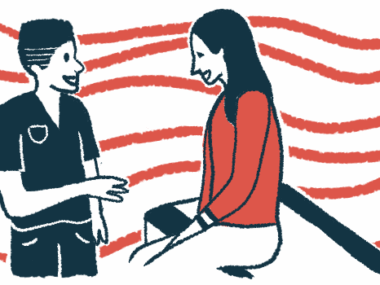Soliris Eases Fatigue, Other Common aHUS Symptoms, Real-world Data Show
Written by |

Soliris (eculizumab) can meaningfully ease fatigue and other symptoms commonly reported by people with atypical hemolytic uremic syndrome (aHUS), a study drawn from real-world data shows.
These benefits also appear to be sustained with continued treatment, findings suggested.
The study, “Functional Assessment of Fatigue and Other Patient-Reported Outcomes in Patients Enrolled in the Global aHUS Registry,” was published in Kidney International Research. The work was supported by Alexion Pharmaceuticals, which markets Soliris.
aHUS is characterized by abnormal activation of the complement system, a group of proteins in the blood that form part of the immune system. Soliris, an approved aHUS treatment, works by blocking the activation of this system.
In clinical trials, Soliris was shown to reduce inflammation, kidney damage, and other clinical manifestations of aHUS. Real-world data have also supported its efficacy in clinical use.
“However, there is a lack of understanding regarding the impact of aHUS on patients’ daily lives, as well as a paucity of real-world, patient-reported outcome data in patients with aHUS outside of the clinical trial setting,” the investigators wrote.
To address this, an international group of researchers gathered data from the Global aHUS Registry (NCT01522183), an Alexion-sponsored effort to collect long-term health information on patients, including those using either Solaris or the company’s other approved aHUS treatment, Ultomiris (ravulizumab).
The registry is currently recruiting people at multiple locations around the world; information on contacts and locations is available here.
A total of 551 aHUS patients were included in the analysis. Of them, 233 had never been treated with Soliris, 295 were on Soliris when they enrolled in the registry, and the remaining 23 started on Soliris after enrollment.
Overall, patients were a median of 28.7 years at the time of their aHUS diagnosis, and entered the registry with a median of 32.5 years. Most were female (59.7%), and 23.2% were children or adolescents.
The proportion of patients with renal, cardiovascular, gastrointestinal, neurologic, and pulmonary signs and symptoms was generally lower among those who never used Soliris.
Fatigue was assessed at least twice using a validated questionnaire, called the Functional Assessment of Chronic Illness Therapy-Fatigue scale (FACIT-Fatigue). This tool measures fatigue via scores ranging from 0 to 52, with higher scores indicating less fatigue.
Among patients without Soliris, median FACIT-Fatigue scores did not change significantly over follow-up, a median of 29.1 months (almost 2.5 years).
For those on Soliris prior to registry enrollment, FACIT-Fatigue scores increased by a median of one point over about 23 months of follow-up. This increase was statistically significant, meaning it is mathematically highly unlikely to be due to random chance.
Of note, the cutoff for clinical significance on the FACIT-Fatigue is generally agreed to be at least three points. Whereas “statistical significance” is a mathematical analysis, “clinical significance” refers to the minimum change in a score that would be meaningfully noticed by a person experiencing the symptoms.
Among the 23 people who started on Soliris after enrolling in the registry, the median FACIT-Fatigue increase was nine points, with a median follow-up time of 17.5 months. Among these individuals, nearly three-quarters (73.9%) experienced a clinically significant increase in FACIT-Fatigue score, indicating fatigue that was lessened to a noticeable degree for these patients.
Similar meaningful reductions in fatigue were seen in 32.6% of patients never on Soliris, and in 37.3% of those already on Soliris at the time of enrollment.
Notably, these changes in fatigue among patients who started on Soliris after entering the registry were observed regardless of other factors, such as whether they were on dialysis, had a kidney transplant, or had been recently hospitalized.
Other patient-reported outcomes, including assessments of general health and reported symptoms, showed trends generally similar to the FACIT-Fatigue scores: the greatest changes over time were seen in those who had started on Soliris while on the registry, evident as better self-reported overall health and an easing of symptoms.
These observations, “are likely attributable to the effects of treatment plateau versus treatment initiation,” the researchers wrote. In other words, dramatic improvements are seen relatively soon after starting treatment, and then a new status quo is reached and maintained.
As such, “these findings suggest that the improvements experienced by patients on initiation of eculizumab are sustained over time with continuous treatment,” the researchers concluded.
Beyond perceived effects of Soliris’ use, collected data also helps to paint a holistic picture of the symptoms experienced by aHUS patients, and how they affect daily life.
In addition to fatigue, which was reported by 61.4% of patients, the two other most common symptoms were headache (54.4%) and weakness (46.4%). All three were the top 3 symptoms reported throughout the study.
Each year, these patients also reported a median of 0.38 healthcare provider visits, 0.13 emergency room visits, and 1.58 missed days at work. More than 1 in 10 people were not working, or not working full-time due to their disease.
“This analysis provides insights into the overall burden and quality of life in patients with aHUS, regardless of treatment,” the researchers wrote.





